How to Fix Oral Hygiene: A Complete Guide to Healthier Teeth
Maintaining good oral hygiene is one of the most important aspects of overall health, yet many of us neglect it. Whether you're struggling with bad breath, bleeding gums, or plaque buildup, it's essential to address oral hygiene problems to avoid more serious dental issues down the line. I know from personal experience how easy it is to fall into unhealthy habits, but once you understand the right steps to take, fixing your oral hygiene can be straightforward and even fun.
In this article, I’ll walk you through how to fix oral hygiene, offering practical tips and insights based on my own journey and expert advice. Whether you need to fix the basics or address specific oral health concerns, this guide will help you achieve a brighter, healthier smile. So let’s dive into the first step: understanding what constitutes poor oral hygiene and why it matters.
1. Understanding the Importance of Oral Hygiene
Oral hygiene isn’t just about keeping your teeth clean. It's about taking care of your gums, preventing tooth decay, and avoiding bad breath. I’ve learned that neglecting oral hygiene can lead to serious issues like gum disease, cavities, and even heart disease in the long run. For example, gum disease has been linked to various health conditions, including diabetes and stroke. As I’ve come to realize, oral health affects much more than just your teeth—it’s integral to your overall well-being.
When I was younger, I didn’t pay much attention to my oral hygiene, thinking brushing my teeth once a day was enough. However, over time, I started experiencing gum sensitivity and noticing more plaque buildup. After visiting my dentist, I learned that poor oral hygiene could lead to serious issues if not addressed early. With that wake-up call, I began implementing small changes that eventually made a significant difference.
2. Identifying Common Oral Hygiene Problems
Before we discuss how to fix oral hygiene, it’s important to identify common oral hygiene problems that many people face. Recognizing these issues early on can help you take the necessary steps to improve your dental care. Here are a few of the most common problems:
2.1. Bad Breath (Halitosis)
Bad breath, also known as halitosis, is one of the most common oral hygiene issues I’ve encountered. It can be caused by food particles trapped in the teeth, dry mouth, or even an underlying dental issue like gum disease. For me, bad breath was often the result of not properly cleaning my tongue or brushing all the surfaces of my teeth. I discovered that bacteria could accumulate on the tongue, contributing to that unpleasant smell. By scraping my tongue with a tongue scraper and brushing all areas of my mouth more thoroughly, I was able to eliminate most of my bad breath issues.
2.2. Bleeding Gums
Bleeding gums are a sign that your gums are inflamed, often due to plaque buildup or gum disease. I experienced bleeding gums when I was brushing too aggressively, which caused irritation. Over time, I learned that gentle brushing with the right technique and switching to a soft-bristled toothbrush could make a big difference. Bleeding gums can also be a sign of an underlying condition like gingivitis, which requires professional treatment. Regular flossing, along with a proper brushing routine, can help reduce inflammation and prevent bleeding.
2.3. Plaque and Tartar Buildup
Plaque buildup occurs when bacteria in your mouth mix with food particles and saliva, forming a sticky layer on your teeth. If not removed, plaque can harden into tartar, which can only be removed by a dentist or hygienist. I struggled with plaque buildup in the areas between my teeth and along the gumline, where brushing alone wasn’t enough. Regular flossing, combined with a good oral hygiene routine, is key to preventing plaque from turning into tartar.
3. How to Fix Oral Hygiene: Practical Tips and Solutions
Now that we understand the common oral hygiene issues, let's discuss the most effective ways to fix them. These simple yet powerful habits can help you improve your oral health and keep your teeth and gums in excellent condition.
3.1. Brush Your Teeth Properly
The foundation of good oral hygiene is brushing your teeth properly, and I learned that there’s more to it than just brushing twice a day. The key is to use the right technique. I used to rush through my brushing routine, but I’ve since learned that brushing for two minutes, using gentle circular motions, and making sure to reach all surfaces of the teeth is essential. I also use a fluoride toothpaste, which helps to strengthen the enamel and prevent cavities.
In addition, it’s important to replace your toothbrush every three months or sooner if the bristles become frayed. Using an electric toothbrush can also be beneficial, as it can help you brush more effectively by ensuring even pressure and movement.
3.2. Floss Daily
Flossing is an often-overlooked part of oral hygiene, but it’s vital for removing food particles and plaque from between the teeth and along the gumline. I learned the hard way that not flossing can lead to gum disease and cavities. By flossing daily, I was able to prevent plaque buildup in hard-to-reach areas, particularly in the spaces between my teeth.
Flossing may take a bit of time to get used to, but it’s well worth it for your oral health. You can also try using floss picks or an interdental brush if traditional flossing is difficult.
3.3. Use Mouthwash
Mouthwash is a great addition to your oral hygiene routine as it helps kill bacteria, freshen breath, and reduce plaque. I use a mouthwash with fluoride that helps protect my teeth from decay while also promoting healthy gums. Mouthwash can also reach areas of the mouth that brushing and flossing might miss, providing an extra layer of protection against bacteria.
Make sure to use a mouthwash that’s suitable for your needs—whether it’s to combat bad breath, reduce gum inflammation, or protect against cavities. I’ve found that using mouthwash after brushing and flossing helps to keep my mouth feeling fresh and clean.
3.4. Regular Dental Checkups
Even with a solid oral hygiene routine at home, regular visits to the dentist are essential for maintaining optimal dental health. I’ve learned that professional cleanings help remove tartar buildup that I can’t reach on my own, and my dentist can check for any early signs of oral health issues. Regular checkups also give your dentist the opportunity to identify problems early and recommend treatments to prevent further issues.
4. A Personal Story: My Journey to Better Oral Hygiene
I remember a time when I neglected my oral hygiene routine. I didn’t floss regularly, and I was brushing too quickly without giving enough attention to the areas that needed it most. Over time, I noticed my gums would bleed when I brushed, and I started to feel self-conscious about my bad breath. After visiting my dentist, I was given a detailed explanation of how my oral hygiene habits were affecting my teeth and gums. I realized that I needed to make changes to my routine if I wanted to avoid serious dental issues.
Since then, I’ve followed a consistent routine of proper brushing, daily flossing, and using mouthwash. The results have been incredible. My gums no longer bleed, and my breath is fresher. More importantly, I feel more confident about my smile and my overall health. It wasn’t an overnight change, but with dedication and the right approach, fixing my oral hygiene became achievable.
If you’re looking for the right products to support your oral health journey, check out Dentistry Toothtruth for expert recommendations on toothbrushes, toothpaste, mouthwash, and more.

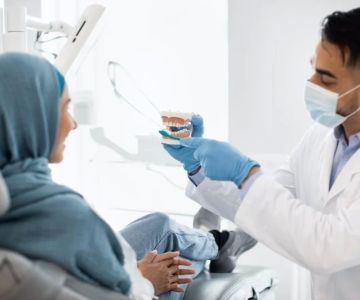


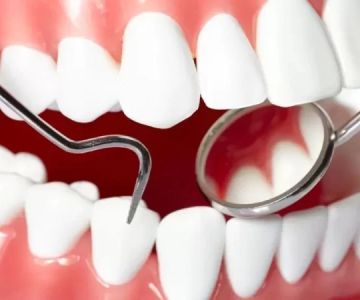
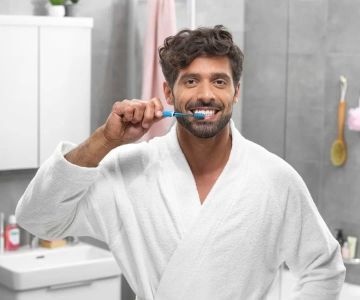
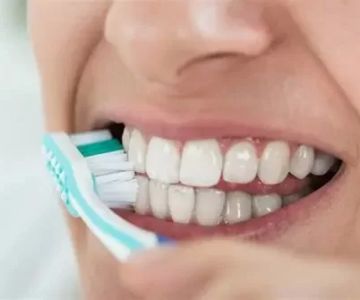
 Genesis Dental of Taylorsville4.0 (842 review)
Genesis Dental of Taylorsville4.0 (842 review)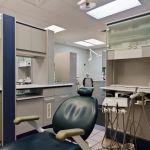 Dental Solutions Market Street4.0 (576 review)
Dental Solutions Market Street4.0 (576 review) Kendall Pointe Dental4.0 (329 review)
Kendall Pointe Dental4.0 (329 review) Dr. Alexander Portnoy DMD4.0 (14 review)
Dr. Alexander Portnoy DMD4.0 (14 review) Absolute Dental - Maryland Pkwy4.0 (580 review)
Absolute Dental - Maryland Pkwy4.0 (580 review) HealthPartners Dental Clinic Blaine2.0 (36 review)
HealthPartners Dental Clinic Blaine2.0 (36 review) The Importance of Oral Health Education During Pregnancy for a Healthy Pregnancy
The Importance of Oral Health Education During Pregnancy for a Healthy Pregnancy Best Tips for Brushing Your Teeth Properly for Healthy Gums: Essential Techniques for Oral Health
Best Tips for Brushing Your Teeth Properly for Healthy Gums: Essential Techniques for Oral Health Why Skipping Dental Checkups Can Lead to Bigger Oral Health Problems
Why Skipping Dental Checkups Can Lead to Bigger Oral Health Problems Advantages of Porcelain Dental Restorations
Advantages of Porcelain Dental Restorations How Can Diabetes Cause Tooth and Gum Problems? Preventing and Managing Oral Health Issues
How Can Diabetes Cause Tooth and Gum Problems? Preventing and Managing Oral Health Issues Healthy Habits for Promoting Good Oral Health and Hygiene: Tips for a Healthy Smile
Healthy Habits for Promoting Good Oral Health and Hygiene: Tips for a Healthy Smile